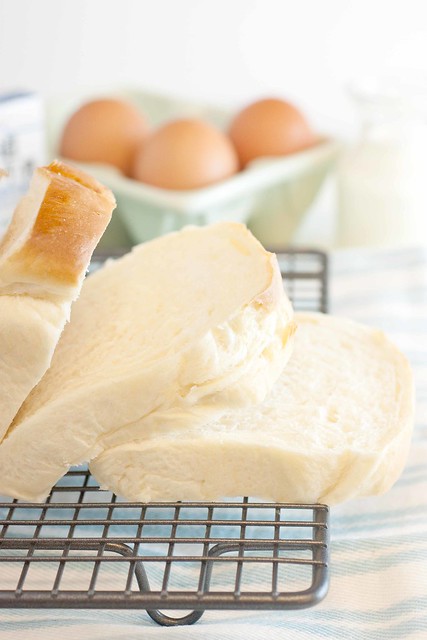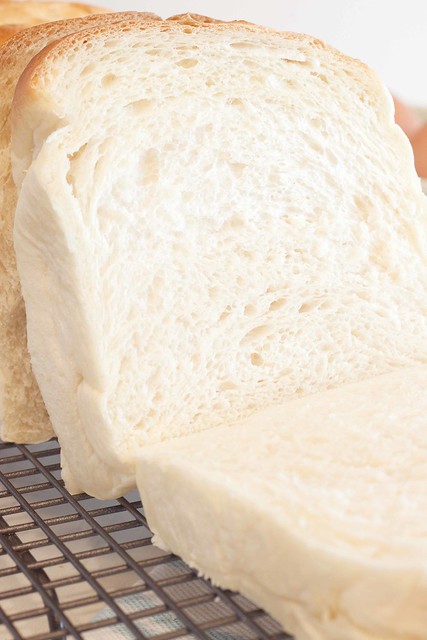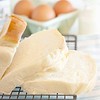


I jumped onto the Bread Bandwagon rather late in life...:) My first bread were the sweet soft buns-individual soft butter rolls made using the Japanese Water Roux (Tangzhong) method. Encouraged by the positive outcome, I added Yvoone C's 65C Tang Zhong Bread to my cookbook collection. Poring over the different permutations of butter to flour and liquid to flour ratio, the book demonstrated the countless possibilities the Water Roux method is capable of delivering.
The buns were individually portioned and were relatively easy to handle. Variations can be introduced rather easily with different types of sweet and savoury fillings. Next in the category are the sandwich loaves. Stately and substantial, these normally require a little more kneading and rolling.
The recipe featured here is denser and richer. The incorporation of Hokkaido milk (I do happen to have Hokkaido milk which I had bought from Hong Kong, but normal full cream milk will do just as well) and fresh cream yields a fine crumbed, moist texture. I had my first slice with canned chili Tuna and it felt very satisfying. I do suspect, however, that I had not proofed it enough as the instructions did not specify the duration for the last proofing stage but merely stated that the loaf should proof until it has risen to 80% of the baking pan.
Overall, a worthy experiment and I can't wait to work my way through the book....

Recipe : (from Yvonne C's 65C Tangzhong Bread)
Bread flour 270g
Castor sugar 43g
Salt 4g
Instant Dried Yeast 6g
Egg 43g
Fresh Cream 29g
Milk 27g
Tang Zhong 92g
Butter 24g (cubed)
Method :
1. Place Bread flour, sugar, dried yeast, egg, fresh cream, milk in a mixing bowl. Mix with kneading hook at low speed until liquid is well blended and dough starts to come together.
2. Add Tang Zhong and salt. Knead until the dough comes to together to form a ball.
3. Add butter slowly, allowing butter to be incorporated with dough before adding more.
4. Continue to knead at medium speed for 15 minutes until window pane stage is obtained. (this is a test done by stretching the dough. The dough will thin out when stretched but will not break. If the stretched dough breaks, kneading is insufficient)
5. Gather the dough into a ball and place in a lightly oiled bowl and cover with plastic wrap. Allow dough to proof for 40mins. (28C/ 75% relative humidity)
6. Separate dough into 4 smaller portions. Roll each small portion into a round ball. Proof at room temperature for another 15mins. (room temperature)
7. Flatten each small ball and using a rolling pin, flatten and roll dough into an oval shape to remove trapped air. Fold the 1/3 of longer side of the oval flat dough inwards towards the center of the dough and press the folding line to seal. Fold the other longer side of the dough inwards towards the first folding line and press to seal.
8. Flip the folded dough over so that the seal lines are now facing downwards.
9. Using a rolling pin, roll the dough along the length such that it stretches to about 30cm. Flip the dough over and from one of the stretched dough, roll up the dough like a towel. Place the seal line into a baking loaf pan.
10. Repeat the same for the other 3 balls and line all 4 rolled up dough side by side in the loaf pan.
11. Let doughs proof in pan until it fills up 80% of the pan.
12. Brush with egg wash. Bake in an oven preheated to 170C for 35mins.
13. Remove from oven and let the loaf cool down before demoulding.
No comments:
Post a Comment